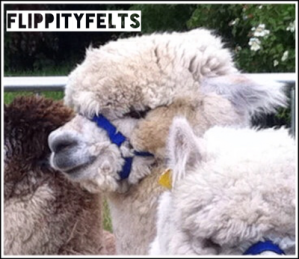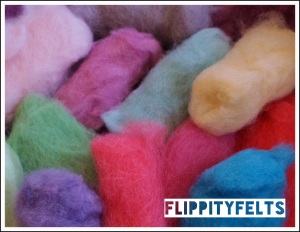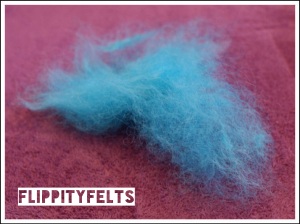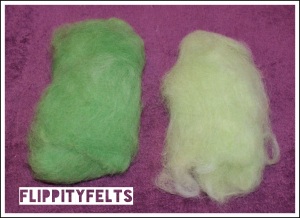Hands up who can tell the difference between alpacas and llamas? No, not you Blenkinsopp, you’re a dirty cheat and a blethering idiot to boot. No Smedley, an alpaca is not a type of cheese, sit down boy!
Anyone…?
Well, settle down girls and boys, ‘cos you’re about to get schooled!!!
These are alpacas:

Alpacas are the ones with a decent PR team behind them. You know alpacas – they’re the ones who look like the adorable offspring of a sweet liddle sheep and a very lonely poodle. C’mon, look at them! Why, they’re just nothing but a tribe of snuggly little goofs. They smile! They have chubby cheeks! They look like pipe cleaners when they’re sheared! You know, just taking one look at them, that alpacas are going to be friendly, people-loving innocents who’ll trot alongside you and want to be your very best pal.

…Whereas llamas look like the complete opposite. Ask a group of people what they think of llamas and their answers will include words like ‘spit’ and ‘kick’ and ‘devilspawn.’ These are the animals who look like they’re born bad. If looks could kill, everyone who’s reading this page would, at the very least, be starting to feel a little bit peaky by now. Not only will llamas tell you who’s next to die on Game of Thrones, but they’ll also nick your pint, headbutt you in the stomach then talk smack about you for the rest of the night.

This is a little unfair on llamas because, despite their reputations, they are actually very friendly, are more likely to spit at each other than humans, and are actually considered by many to be more friendly towards people than alpacas. If llamas and alpacas were dogs and cats then llamas would be the ones gazing adoringly at you whilst alpacas would be the ones eating your food then allowing you the privilege of sharing the same breathing space as them.
Physical and temperamental differences aside, the main difference between alpaca and llamas is their purpose. Llamas are your typical beasts of burden – originally bred for their ability to carry things and be eaten. To be honest, if that was my whole purpose in life I think I’d spit occasionally too. Alpacas, on the other hand, are bred primarily for their fleece. And when you’re breeding an animal that’s going to be taking up a lot of farmspace and eating a lot of food and you’re not using it for meat, you would be safe in the assumption that their fibres are going to be something special (unless they’ve rolled in something unmentionable).

Information
The history of the alpaca and their importance to South American culture is actually very interesting, but I’m not going to go into it here (what am I, Google?) Let’s just concentrate on the actual fibre (although one ‘fun fact’ I learned is that there are no alpaca – or llamas – living in the wild anywhere in the world, which… isn’t such a fun fact now I think about it.)
Micron – 15-40
Staple Length – 7-14 cm
Handle – Silky soft
Purchased from Dawn at Knavesmire Alpaca – various price options
All images on this page show wool purchased from Knavesmire Alpaca, and you may note that some information below (such as colour and preparation style) is specific to this seller.
One thing I wasn’t aware of was how different alpaca fibres can be. Whilst we all know that sheep come in many and varied varieties, the breeds of alpaca are limited to just two – the Suri and the Huacaya. Thankfully Dawn was on hand to educate me on this matter by sending me some samples of different cuts, taken from different animals at different ages and from different points on their bodies. This was an eye-opener for me as the different textures of fibres was truly quite astounding. In the image below you can see a comparison of each of the different fibres.

1) Young adult – natural white hair, washed, saddle. This appears to be a naturally coloured, uncarded version of the wool I worked with in the review as a whole. Even uncarded you can still feel the silkiness of the wool and it remains pleasant and easy to felt with. As a side note, this is the wool I used in my first experiment with dying my own fibres, and I ended up (after a few false starts due to my own inexperience) with a nice pale yellowy-orange, which I plan to use in a future model (watch this space!) I’m not sure if this is particular to alpaca as I’ve never dyed wool before, but the fleece remained just as soft and the vinegar smell (you have to set the dye with vinegar if you’re using food colouring) had completely faded by the time it had dried.
2) Leg and guard hair – natural fawn, unwashed. This hair is a little coarser and with some longer, thicker guard hair throughout – probably the closest to sheep fibre out of the whole selection. This is very useful to have if you wanted to mix it up with some saddle as it provides a grip that is easier to handle if you are just starting out with alpaca. The colour is beautiful (despite my best efforts I couldn’t quite replicate it in the picture) – it’s a honey coloured caramel.
3) Younger adult – natural black, unwashed (as per usual, mums and dads, amirite? Fnarr fnarr!), saddle, uncarded. This is also very soft and beautifully coloured – a soft, charcoal black with dark brown flecks (this is called ‘rusting’ and is a natural occurrence in black animals as they age)
4) Slightly older adult – natural brown, unwashed, saddle, uncarded, slightly shorter staple. So soft, so so soft. It’s a beautiful colour and the shorter staple doesn’t make it harder to work with. Interestingly, although this was unwashed (and I therefore had my first try at washing my own fleece, which was actually astoundingly easy) there was very little vegetable matter to pick out and the water was still quite clean afterwards.
5) Cria (baby) – natural white, washed, uncarded. Oh my goodness, and I thought normal alpaca was soft! This takes the softness level to 11! It really feels like foam, lighter than air, yet isn’t really any more difficult to work with. Surprisingly, since I usually prefer working with carded wool, I found the unbrushed version easy to work with – possibly because the ‘wooliness’ helped me get more of a grip on it – and it is worth pointing out, for those of you who struggle to fid a natural white that isn’t really pale cream, that this is actually white white. I tink this would make awesome chest fur on a fox or a squirrel.
One interesting point about alpaca fleece is that it does not contain lanolin. This reduces the scent (for those who don’t like to have fibre that smells) and also makes it unable to repel water. I also found that the unwashed fleece still felt soft and not at all greasy, as you might expect. I have read, although can’t confirm personally, that this also means alpaca fibre is considered hypoallergenic.
First impressions
The first thing I noticed when I set hand on alpaca fibre is that it is so soft you almost don’t realise that you are actually touching it. We’re talking mega-soft here – clouds in fibre form. It’s light and delicate and feels like silk. The wonderful Dawn at Knavesmire Alpaca tells me that alpaca fibre is known as the fibre of the gods, and she’s right (the old gods and the new). I can promise you that I have a lot of wool at home – two large boxes at the end of my bed, one large box under my bed, and a tower of drawers in the corner of the room that is getting increasingly difficult to close. I do not possess a single piece of fibre that feels as soft as the beautiful goodies Dawn has sent me. It feels like silk, and I’m starting to wonder just how easy this will be to felt with. I’m used to sheep wool, and I’m particularly fond of wools that are a little crinkly and harsh – alpaca wool is the polar opposite of this.
Looking at the individual fibres themselves I can see that they are extremely fine. Not quite spiderweb fine, but heading into that territory. I kinda want to rub it all over my face, it just feels so luxurious and I’m a bit funny like that. I refrain – I am, after all, a grown up. There is no smell and not a speck of vegetable matter.
Obviously the colours of each of the fibres will depend on your supplier – I can only base my assertions on the beautiful selection that I bought from Dawn, but they are truly stunning. Something about the softness of the colours complements the softness of the wool.

I reckon if you stuck a stick in the bottom of that someone would probably think it was candifloss.

It couldn’t be easier to gently pull the fibres apart – it’s so compliant I get the impression that it would separate if you just asked it to – yet it’s sturdy enough so that you don’t need to worry about your carded batts falling apart. It’s really quite eager to please, staying in a neat bundle until you need to pull a piece off. It’s easy to pull a tiny bit of fluff or a larger tuft.

Test One – The Coverage Test
The first part of this test involves testing how quickly and effectively a small ball (made from sheep wool) can be covered by the fibre being tested. This involves two separate stages – the first involves ‘light coverage’ (taking a thin layer of the wool to see how much coverage it provides), and the second involves ‘complete coverage’ (covering the ball so that the core colour is no longer visible.)

Part A – Light Coverage
Unlike the carded batts of, say, NZ carded wool (review coming soon), this alpaca fibre has no sheet layers that can be easily peeled apart, but it is still easy to get consistent amounts to work with. The fibre is very fluffy and there is a little shedding at the start.
Because of the silkiness of the fibre it needs a tight grip in place when you start, but slippage is minimal. It is surprisingly easy to work with – I was expecting to struggle but it took a firm hold onto the core fairly quickly, and from that point it was straightforward. I soon found as well that a little goes a long way with this fibre – you really don’t need to use all that much to create a great effect.
One point to note is that the fibres do have a tendency to slide together when you’re only using a small amount, creating a rather mottled effect. However, I would consider this as a bonus – something to work into my design rather than fight against.

Part B – Complete Coverage
It didn’t take too much additional wool to obtain full coverage of the ball, and there is no colour patchiness. All well and good.

Part C – The Thumb Test
Test Two – Overlaying Contrasting Colours
The second test involves layering a thin layer of fibre in a contrasting colour to the original covered ball, in order to see the effect that this produces.
For this test I used the ball above and chose a nice raspberry shade to overlay it with. Obviously I didn’t want to completely cover the original ball as… Well, that would be a pretty pointless test! Instead I layered lightly.

I literally only did this for the purpose of this test, deliberately choosing two clashing colours so you can see the effect, and yet I somehow created something incredibly beautiful without even trying. It is beautiful. Many of my test pieces end up being used as a cores for my models, but I can’t cover this up, it’s too pretty. I don’t know what to do with it, but I can’t cover it! It lives on my bedside table now. The way the silky fibres group together over the silky surface of the undercoat (if you can call it that) creates a beautiful marble effect. Pretty pretty pretty!
Test Three – Overlaying Similar Colours
As above, this test is designed to examine the effects of layering two different colours (with the under-colour felted on with complete coverage).
For this test I chose a darker green as the base colour and overlayed it with the paler green. The techniques used were exactly the same in the tests above.

The effect, once more, was very beautiful but a lot more subtle due to the colours being quite close matches. The top layer still created a marble effect but the final appearance was softer and more natural. In places you can see the under-colour quite clearly, but other coverage is more blended – almost like a cloud over the world… Which actually gives me a good idea for a project…

Test Four – Felting down smoothly
Contrary to popular belief it is possible to felt alpaca fibre down smoothly so that there’s little or no fuzz (although I can’t help but feel that’s missing the point somewhat) it takes a little bit longer than it might with sheep fibre, but it is do-able.

The other nice thing about alpaca is that it leaves you with very few needle marks if you use a size 38 needle or finer, although needle marks will be more apparent if you felt the fibre down smoothly.
In Summary
Don’t be afraid of trying alpaca!
Listen, alpaca is a little tougher to use, and I struggled using it as a core, but when I used it as a top colour it was utterly stunning and I am so glad I gave it a try. For comparison I’d say it’s a little easier to use than merino as a top colour, and about the same if using it as a core. Using a carded batt of alpaca fibre is the easiest way to add a top colour, and once you’ve got going you’ll find it’s actually a lot easier to use than you’d think, as long as you remember that creating a completely smooth effect is not really what alpaca is best known for. Although you can felt it down smoothly with a modicum of extra patience you’d be missing one of the main draws of using alpaca if you did – it creates a stunning fuzzy effect on your finished pieces that doesn’t venture into ‘coarse’ territory and leaves the surface so soft you just want to stroke it all the time. Also, and this surprised me a little, considering the loose feel of alpaca, frequent handling of finished work does not actually seem to result in any additional frizziness, unlike some of my sheep-wool pieces which occasionally need to be smoothed back down to tame the fibres that seem to escape whenever you pick the piece up.
I’m completely converted. That doesn’t mean I’m going to be abandoning sheep wool – it is, and will always be, the medium, I prefer to work in – but that I will be experimenting more and more with alpaca going forward, to the extent that I have now designed a whole range (the Fuzzrow Felties) that will be what I consider a specialist alpaca range (although, for full dislosure, I should state that I will still be, in the whole, using a sheep wool core, as it’s easier.) I certainly now consider alpaca fibre a necessary staple of my wool reserves.
For those of you still unsure about whether alpaca is the right fibre for you, it might be worth trying out a kit. Knavesmire Alpaca also sells an excellent kit for those who want to have a little dabble in a different type of fibre – I have reviewed it here.
Would you create a whole model in this wool?
Hmm, this is actually quite a tricky one to answer, and is one of the few occasions where I can’t actually give a yes or a no.
On the one hand – I did find it hard using alpaca to create a core, and I wasn’t very successful. The wool was a bit too slippy to get going easily, and when trying to create a ball I ended up with one that had a creased corner that I couldn’t get rid of easily. However, I’ll freely admit that this is something I gave up on perhaps too easily – to be blunt, I’m not so interested in using alpaca as a core when I can use sheep wool, which is easier. No one is going to see the core, so why waste such gorgeous alpaca fibres on a part of the model that won’t be seen? I think that if I had persisted I would have become more confident in using alpaca fibre for a core as well, so I wouldn’t advise necessarily being put off by my experiences if this is smething that you would like to do. There is certainly a lot to be said for the effects achieved when using only alpaca fibres for a model.
On the other hand, I would gladly use only alpaca wool to cover an entire model. I simply cannot replicate the effects I achieved below, with Hesserly the Hedgehog, in any other fibre. OK, sure, I can make something frizzy – anyone can make something frizzy (let’s face it, it’s the needle-felter’s default mode!) But this is less frizzy, more fluffy. And it’s sturdy too. It can withstand handling, I’ll say that!

Please note that different clips may produce wool that differs from the descriptions given above. All reviews are based on the quality of the clip I am using at the time of review.
Some photographs have been edited to ensure images represent the wool as true-to-life as possible, as apparently the ability to take accurate pictures of wool is not one of my strengths.
This is a great review, and as an alpaca owner I have been handling alpaca fibre for 9 years. The fibre is a hair rather than a wool so can be easily dyed with funky hair dyes too.
LikeLike
Thanks Teresa, that would make so much sense when considering the way the fibres behave! I often compare it to merino because of its soft silkiness but it really is very different and far superior in my opinion.
LikeLike
Would love the address to order some of this inbrushedvwool . I have duscovered a passion for needle felting pictures
LikeLike
Hi, I have a facebook page where you can find fibre from my alpacas the fluffmonsters who share a page with me. Pop fluffmonstercraft in your groups box and you should find me. I am UK based is that OK with you ? I only send within the UK
LikeLike